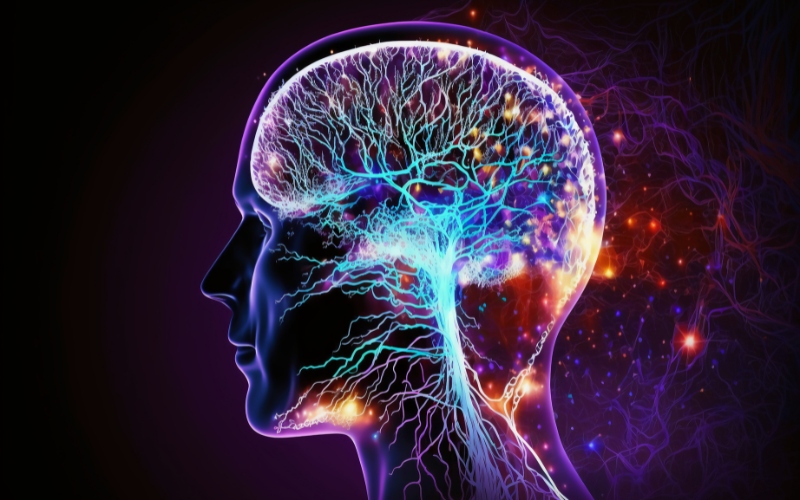
Polyvagal theory is a relatively new and influential concept in the fields of neuroscience, psychology, and psychiatry. Developed by Dr. Stephen Porges, the theory has revolutionized our understanding of the autonomic nervous system and its role in emotional regulation and social behavior.
The autonomic nervous system (ANS) is responsible for regulating many of our bodily functions, including heart rate, breathing, digestion, and perspiration. It is divided into two main branches: the sympathetic nervous system (SNS) and the parasympathetic nervous system (PNS).
The SNS is responsible for the “fight or flight” response, which is activated in response to perceived threats. When the SNS is activated, the body releases adrenaline, cortisol, and other stress hormones that prepare us to respond to danger. The heart rate increases, the lungs take in more air, and blood is diverted away from non-essential organs to the muscles, which are primed for action.
The PNS, on the other hand, is responsible for the “rest and digest” response, which helps us relax and recover after a stressful event. The PNS slows the heart rate, increases digestive function, and conserves energy.
Polyvagal theory proposes that there is a third branch of the ANS, which Dr. Porges calls the social engagement system (SES). This system is unique to mammals and is responsible for our ability to connect with others and form social bonds.
The SES is activated in response to social cues such as eye contact, tone of voice, and facial expressions. When the SES is activated, the body releases oxytocin, a hormone that promotes social bonding and trust.
According to polyvagal theory, the ANS operates on a hierarchical system. When we perceive a threat, our body first activates the SNS, which prepares us for fight or flight. If the threat persists, the body will activate the PNS, which helps us conserve energy and recover. If the threat is perceived as social, however, the body will activate the SES, which allows us to engage with others and form social bonds.
Polyvagal theory has significant implications for our understanding of mental health and emotional regulation. Individuals with a history of trauma, for example, may have a dysregulated ANS that is unable to effectively activate the appropriate response to a given situation. Instead of activating the SES in response to social cues, individuals with trauma may remain in a state of hypervigilance, constantly activating the SNS in response to perceived threats.
This can result in a variety of mental health conditions, including anxiety, depression, and PTSD. By understanding the polyvagal theory, clinicians can work to regulate the ANS and help individuals develop healthy responses to stress and social cues.
I. The Polyvagal Theory, developed by Dr. Stephen Porges, explains how the autonomic nervous system (ANS) – the part of your nervous system responsible for involuntary functions like heart rate and digestion – influences our emotional and social experiences. The ANS has three main branches:
II. Recognizing Your Autonomic State:
Understanding your current autonomic state is crucial for effective self-regulation. Pay attention to physical sensations:
III. Practical Techniques for Working Professionals:
The following techniques, based on the Polyvagal Theory and the provided text, can help you regulate your nervous system throughout the workday:
A. Breathwork:
B. Sensory Regulation:
C. Cognitive and Emotional Regulation:
IV. Action Plan for Working Professionals:
V. Important Considerations:
Polyvagal theory has significant implications for our understanding of mental health and emotional regulation. By understanding the hierarchical nature of the ANS and the role of the SES in social bonding and emotional regulation, clinicians can work to develop effective treatments for a variety of mental health conditions.
In your daily practice, it’s not just breathwork or grounding that can help settle a dysregulated system: movement plays a vital role too. Engaging in a gentle, structured fitness program can support autonomic balance by combining somatic engagement with mindful pacing, helping you restore regulation over time.
Moreover, the theory provides a framework for understanding the importance of social connection in our lives. Humans are social creatures, and our ability to connect with others and form social bonds is essential to our wellbeing. By promoting social connection and healthy emotional regulation, we can improve our overall quality of life.
In conclusion, polyvagal theory provides a powerful framework for understanding the complex interplay between the nervous system, social interaction, and mental health.
The Zen Ten isn’t just philosophy, it’s a practical performance tool used by teams and leaders across industries to improve clarity, reduce friction, and increase well-being at work.
Here’s how organizations integrate it:

Origins Unity LLC Gym Yoga Studio Meditation Center offers Holistic Health and Wellness Coaching, Corporate Wellness Programming, and more. We are Mental Health Advocates and aim to produce wellbeing through natural means. Our services are for individuals, groups, and companies.
